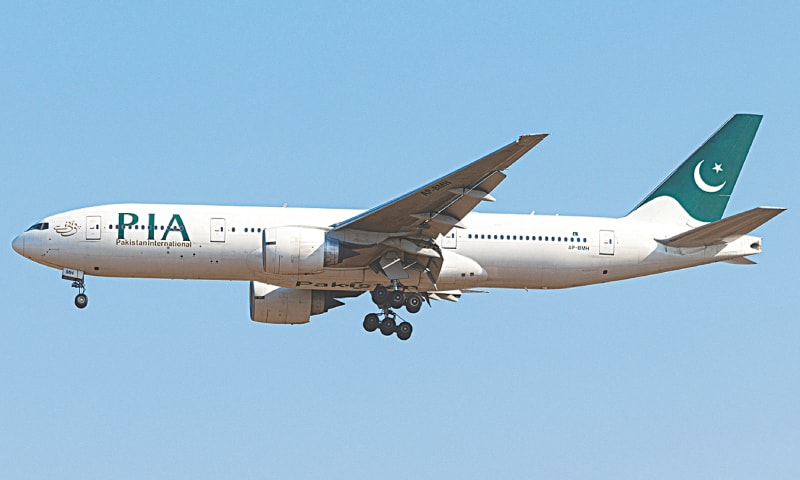PTBP Web Desk
The aviation industry witnessed two significant emergency landings that brought to the forefront the unwavering importance of stringent safety measures and quick decision-making by flight crews. These incidents, involving Pakistan International Airlines (PIA) and Ethiopian Airlines, occurred under circumstances that could have led to severe consequences were it not for the trained response of the crews and the robust safety protocols in place.
On a routine flight bound for Dubai, a Pakistan International Airlines aircraft encountered a critical situation that prompted an emergency landing. Flight PK-283, carrying 170 passengers, was forced to divert to Peshawar International Airport shortly after takeoff. The cause of the emergency was an alarming indication of a potential fire in the cargo compartment. Such indicators are part of the advanced safety systems installed in aircraft to alert the crew to potential hazards that could jeopardize the safety of the flight and its passengers.
Upon receiving the fire alarm, the pilot took decisive action to divert the aircraft to the nearest airport. This quick thinking and adherence to emergency protocols ensured that the plane landed safely without any harm to passengers or crew. The incident not only highlights the risks associated with air travel but also showcases the effectiveness of safety measures and the importance of pilot training in handling unforeseen emergencies.
In a separate but equally alarming incident, an Ethiopian Airlines Boeing 737 cargo plane faced an unexpected challenge while en route from Addis Ababa to Ahmedabad. The cargo plane, unable to land at the Sardar Vallabhbhai Patel International Airport in Ahmedabad for reasons not immediately clear, found itself in a precarious situation. The Air Traffic Control (ATC) at Ahmedabad instructed the pilot to perform a go-around at 1,500 feet—a standard procedure when a plane cannot land on its first approach.
However, still unable to land after the go-around, the pilot made the critical decision to divert the flight, ET 3644, to Karachi’s Jinnah International Airport. The diversion to Karachi was a measure of last resort, reflecting the pilot’s prioritization of passenger and crew safety over sticking to the planned route. The successful emergency landing in Karachi not only averted a potential disaster but also highlighted the flexibility and readiness of international airports to handle unexpected arrivals.
These incidents serve as stark reminders of the myriad challenges that can arise during flights. They also underscore the vital role that well-trained pilots and crew play in ensuring passenger safety. Both PIA and Ethiopian Airlines are reviewing these incidents to further strengthen their safety measures. Such reviews are critical in the continuous effort to enhance the safety protocols that protect passengers and crew alike.
The aviation industry, while one of the safest modes of transport, relies heavily on the ability of pilots to make quick decisions and the efficacy of the technology installed in aircraft. Regulatory bodies worldwide are continually updating and refining safety protocols to adapt to new challenges and ensure that the trust passengers place in air travel is well-founded.




